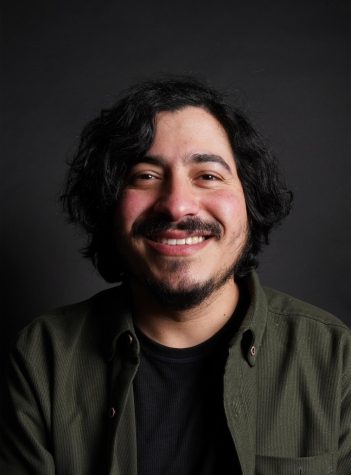
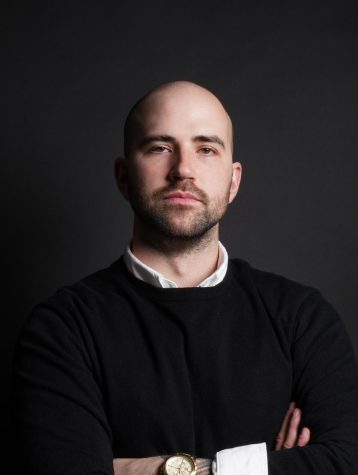
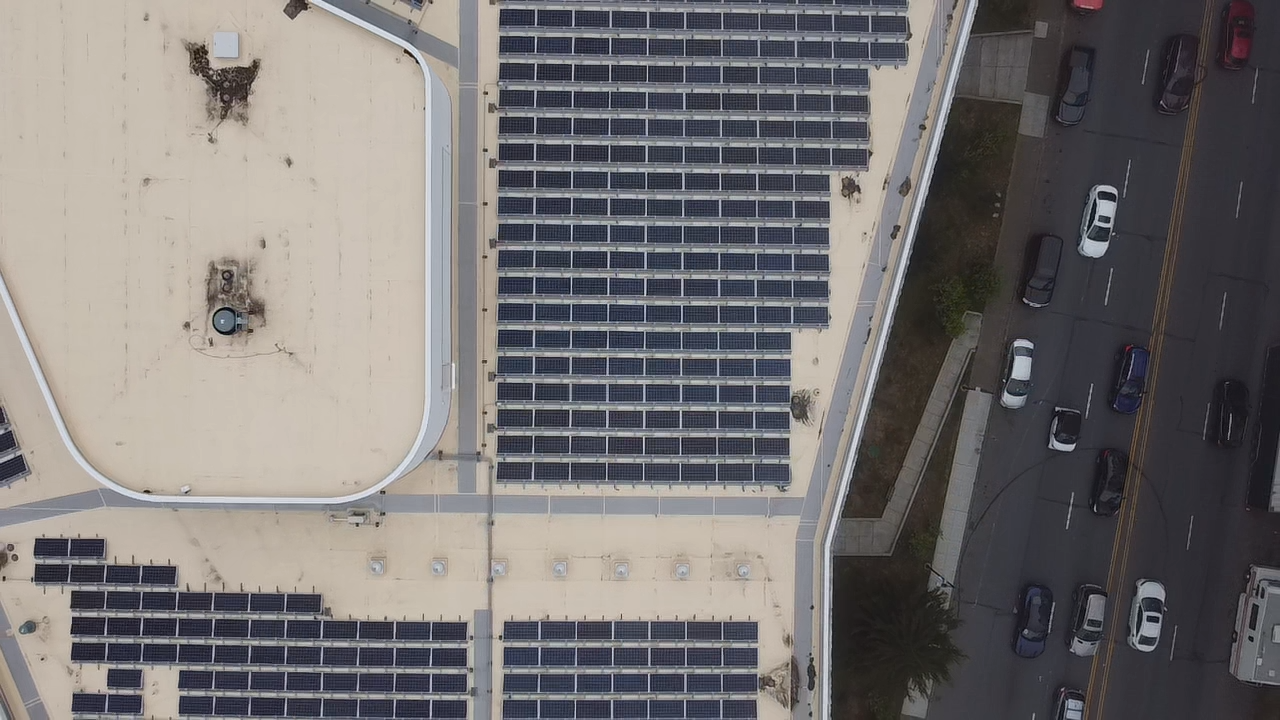

The university is implementing a series of sustainable efforts to positively impact sustainable future of the campus.
May 25, 2023
As she walks through the SF State campus, SF State President Lynn Mahoney appreciates the local bumble bees that pollinate ceanothus and manzanitas, and envisions how the campus may look like in five to ten years as a result of the sustainable policies in effect at the moment. No more natural gas to power new buildings, all-electric cars for the campus fleet, photovoltaic panels that cover buildings, more native gardens, no single-use plastic and a curriculum that includes climate change literacy for every undergraduate at SF State.
Mahoney believes there is urgency to act against climate change, and for the university to do its part in the fight against it.
“For the first time in my life, I do feel like we, as a civilization, are facing an existential crisis. If we do not reverse the damage we have done to this planet, nothing else matters,” Mahoney said.
SF State administrators are working to make the campus sustainable now and in the future. Even though the university has sustainable practices in place, the campus still relies on gas for electricity, offers single-use plastic, and most of its buildings are not Leadership in Energy and Environmental Design (LEED) certified, “a credential that denotes proficiency in today’s sustainable design, construction and operations standards” according to the U.S. Green Building Council.
The university seeks to receive a gold rating from the newest Sustainability Tracking, Assessment & Rating System (STARS) evaluation. This is an initiative by The Association for the Advancement of Sustainability in Higher Education (AASHE) which intends to measure how sustainable universities and community colleges are, nationally and internationally. There are five different categories of rating –– reporting, bronze, silver, gold and platinum. In the last report, SF State received a silver rating and a score of 58.92.
SF State is one of the seven CSU universities that scored silver while other 11 scored gold, and two scored bronze.
This voluntary self-reporting evaluation encourages institutions to submit every three years. SF State last submitted in June of 2018 and its report expired in December of 2021, as of today, only four other California State Universities (CSU) have failed to renew this distinction and SF State is the second to last, just behind California State University, Bakersfield, for the longest expired report. Caitlin Steele, SF State director of sustainability, confirmed via email that the university will have a new report ready by Summer 2023.
Meanwhile, Mahoney said that SF State could do more and that the university welcomes changes that make the campus a more sustainable space for students and staff. The president said that even some of her behaviors have changed given the urgency of the situation and the advocacy of students. The president now uses washable plastic bags and compostable boxes.
Indeed, the advocacy of the students is paying off as student organizations are designing programs throughout campus to see the sustainable changes they want to see.
The Environmental Resource Center (ERC) is an Associated Students (AS) program run exclusively by students. Its mission is to raise ecological awareness among students on campus while they work with campus administrators, designing and planning sustainable strategies that can make SF State a greener space.
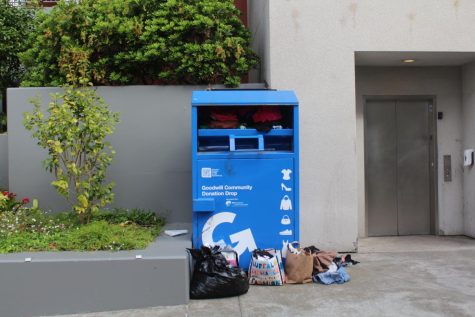
President of ERC Katalynna Vang said that she feels satisfied with the programs they created this semester. The office organized clothing swaps where students can exchange and donate clothes; Food Fridays where they collect leftovers from CityEats and redirect it to local food banks; distribution of goods grown at Sol Patch, the on-campus community garden with seven raised beds created by AS in collaboration with the University’s Ground Facilities.
ERC newest initiative that seeks to collect donations from fast food restaurants on campus to feed students who experience food insecurity. Vang also said that even though they have worked with SF State administrators throughout the semester, there is still a gap in communication between them and students.
“I think that they should definitely listen to what students have to say,” Vang said. “I think hearing them out is also bridging that connection, which [is something] we want to do, and are planning to do in upcoming years.”
Mahoney said the university and its administrators are fully committed to working with students and implementing changes for a more sustainable future.
“I am deeply committed and I do think that is going to require big changes like technologies, energy and the cars we drive, but I also am a big believer in that small change matters,” Mahoney said.
Changes are precisely what the university is implementing now, so these can become a solid foundation for the future. These changes will affect the way the university builds, educates, consumes energy and handles single-use materials.
In the last STARS evaluation, the university reported 200 cars in its fleet of vehicles, 88 of these were all electric and the remaining 112 were hybrids. In comparison, today the university still has the same total number of cars, but 112 of these are fully electric and less than 10 hybrid vehicles, according to numbers provided by Steele, which did not include information on the remaining third of cars.
The university is also devoted to only building and renewing infrastructure on campus with LEED certification. According to the Vice President of University Enterprises Jason Porth, the university is committed to only using the LEED standard for the future because LEED-certified buildings are strategically designed so they can be more sustainable. Windows, for example, are placed in a spot where the sun heats for the longest periods, allowing the building to need less electricity at later times.
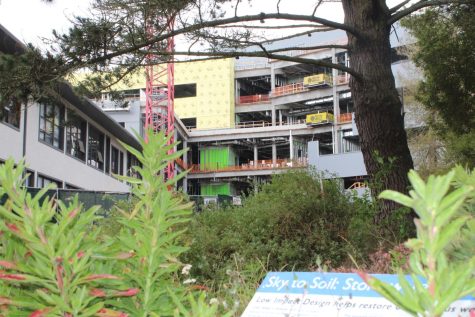
“The campus has always been committed to sustainable design and sustainable building practices. As an example, the West Campus Green Project is going to be certified LEED Gold,” Porth said. “We only build to gold or better standards now on campus, so we are committed to that. The science building will be LEED Gold. Manzanita square, LEED Gold. Mashouf Wellness Center, LEED Platinum, which is the highest rating.”
At the time of the last report in 2018, SF State only listed one LEED-certified building at the time, the Mashouf Wellness Center. Today, Marcus Hall and Manzanita Square also join this distinction. As for the two buildings under construction, the Science building and West Campus Green, these will also be LEED certified. In addition to these certifications, Manzanita Square and the buildings under construction will also be 100% electric.
SF State is not alone in this transition to electric and renewable energy, as this is an effort by the CSU system to reduce carbon emissions. According to the Director of Sustainability for the CSU system and the Chair of STARS, Tamara Wallace, their goal is to be carbon neutral by the end of the decade.
“[By the end of decade] We have achieved our interim goal to carbon neutrality, where we’ve reduced an additional 40% of our carbon reductions beyond what we’ve already accomplished within the last 15 years,” Wallace said. “That means an increase in the amount of buildings that are all electrified, an increase in accessible public transportation for our campuses and an increase in local, affordable student housing so that commute is not an assumed burden of going to higher education.”
SF State uses a third party called SitelogiQ that runs its energy dashboard. The reads of greenhouse emissions for the university in 2018 were 33,955 tons of carbon dioxide; in contrast, in 2022 the reads were 18,626 tons of carbon dioxide. In 2018, 48.37% of those emissions came from people driving to campus; while there is no data for 2022, in 2021 this number dropped to 33.27%.
In efforts to reduce the commute time and provide affordable housing for students and faculty, the CSU, alongside the University of California and California Community College, recently secured funding through state legislation AB-183 to build housing on campus. In fact, 65% of the finance for West Campus Green came from this appropriation.
The university also reported a drop in the consumption of natural gas. During the fiscal year of 2018-2019, SF State consumed 907,000 therms of natural gas while in 2020-2021 the number decreased to 536,000 thousand therms. In addition, in the last STARS report, only 0.88% of the energy consumed on campus came from a renewable source, that number went up to 20% according to the SF State Office of Sustainability.
Some additional efforts from the administration to reduce its dependency on the grid are the photovoltaic rooftops at Mashouf Wellness Center, which produces 295 KW, enough to offset 33% of the total consumption of the building and the on-campus hydrogen fuel cell, located next to the gymnasium, which generates 1.6 MW of electricity, enough to power 1,200 homes.
Despite the efforts by the SF State administration and the CSU to move the system to a more sustainable place, Wallace said that it will also require the participation of the students to help accomplish such goals. Sustainability as she sees it should be part of the CSU education plan.
“I am hopeful in the opportunities of really elevating climate literacy and the importance of it being completely integrated throughout all higher education curriculum,” Wallace said. “ In my opinion, everyone should be graduating from high school, from college, from university with this information completely threaded through everything that they learn.”
SF State already took a step forward in integrating environmental consciousness into its curriculum. The university created the “Climate Justice Leaders Initiative”, a program that provides tools to staff, students, and administration to ensure that sustainability is part of the educational experience at SF State. This initiative offers certificates in climate justice education for current and future PK-12 teachers, climate ambassadors courses training students in effective climate change communication and the introduction of a required climate change course for all undergraduates. There are resources for mini-grants for faculty-led projects researching climate change, fellowships for students researching climate change on and off campus and the creation of a second Sol Patch garden.

The initiative will also organize an annual conference on campus and climate change events as well as certificates in climate change causes, impacts and solutions. All the resources for these initiatives came from SF State alumna Neda Nobari, who donated $3 million for the university to implement this plan in over three years, at the moment the program is nearing its first year.
Climate Justice Leaders Initiative not only promotes climate literacy but also does it in a way that bridges social justice with climate change.
“The first ideas on this climate justice initiative came with the social justice DNA that is in San Francisco State’s institutional history,” said SF State Vice President of University Advancement Jeff Jackanicz. “It just makes sense that at least part of what we do around climate to be very much informed by principles of environmental justice, social justice, climate justice.”
Jackanicz is also the president of The San Francisco State University Foundation, which oversees the investments of the institution. According to its website, the foundation is committed to reducing its investment in fossil fuels to 5% by 2025.
President Mahoney said that SF State has an endowment of $180 million and that the foundation voted to prioritize investments in companies that are working on environmental sustainability. Mahoney said the university was the first institution in the country to take such a step; moreover, the president said that they use the revenues of these endowments to finance a variety of things, scholarships being one of these.
According to CALRecycle, the state of California throws away 285 olympic pools worth of plastic each day. According to Rethink Disposable, Americans use 120 billion disposable cups a year, enough to fill 78,571 garbage trucks, and their production is the same amount of emissions as 366,384 thousand cars. The website also reports Americans use 500 million straws a day with their production generating emissions equal to 8.3 million miles driven by an average car.
Rethink Disposable argues that there will be more plastic than fish in the oceans by 2050.
As a response to this crisis, CSU approved policy 5236.00 in December 2018. This legislation says that all campuses within the system had to eliminate the use of plastic straws and single-use plastic carryout bags by January 2019 and end the sale of plastic water bottles by January 2023. However, SF State still makes plastic water bottles available on campus.

President Mahoney said the university has taken aggressive steps toward the reduction of its single-use plastic policy. An example she said is the distribution of thousands of reusable bottles at the beginning of this semester so students would not be inclined to purchase those that are disposable. Mahoney said SF State now has 38 water refill stations throughout campus to make this practice more convenient to students.
“[The reusable bottles] were designed by an alumnus and we were able to give thousands and thousands of them away,” Mahoney said. “We realized we can go ahead with our refillable stations by getting more of them on campus because you have to have a lot of refillable stations for people to make use of reusable bottles.”
Despite not following legislation 5236, Wallace said the CSU is not interested in imposing any sort of penalties on the institution.
“If we were to apply fees to ourselves it wouldn’t be a way to continue driving students’ success, essentially, we would be charging ourselves,” Wallace said. “So what really becomes the goal is to create a collective action that can span across many different communities and address all goals at the same time with certain solutions, and plastic water bottles is one of them.”
When it comes to the state level, California passed SB-54 last year, a bill that requires all packaging in the state to be recyclable or compostable by 2032. The state also passed AB-1276 in 2021 prohibiting servers to include “single-use food ware accessories and standard condiments, unless those items are specifically called for.”
SF State reported in the 2018 STARS evaluation that it recycled 2,685 tons of materials and composted another 674.62, as for the amount of waste disposed in a landfill or incinerated, the university reported 1,685 tons. President Mahoney said that despite her commitment to a less wasteful future for the university, the technology and incentive are still not quite there yet.
“I know capitalism is not a very popular word on our campus, but we need to make it profitable for industry to produce compostable materials so our vendors can buy it at a reduced price and not as expensive as it is now,” Mahoney said.
As for Wallace, she said that the transition of many industries from plastic is now oversaturating the market for certain materials. As an example, metals like aluminum.
“Ultimately the goal is going to be reusables. That’s what we want for everyone, is to just use reusables, glass containers that they bring to campus, or things of that sort,” Wallace said. “The other alternative is providing them on campus, so having reusable that can be then somehow turned in for dishwashing and then reuse. But, it’s a long journey. We’re not there yet.”
Correction: Director of sustainability stated incorrect year for the upcoming STARS report, this article has been updated for accuracy.

